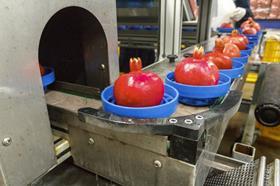
Peruvian fresh pomegranates and figs will now be able to access the US market with irradiation treatment following a deal between Peru’s agriculture ministry (Minagri) and the US plant health authorities this week.
Peru’s agriculture minister Juan Manuel Benites Ramos hailed the deal as “a new export opportunity, diversifying Peru’s export portfolio and opening up a potential market of 320m consumers”.
Minagri estimates that pomegranate exports to the US could be between 10,000 and 20,000 tonnes, with a corresponding value of US$15-30m. Fig exports, could top 5,000 tonnes, worth US$15m, the ministry said.
Figures from pomegranate producer association ProGranada show Peruvian pomegranate exports have risen from 340 tonnes in 2006 to 9,842 tonnes in 2014. Peru’s export window runs from February to July, overlapping with the start of the Chilean deal –its main competitor in the region.
Production in the main growing regions of Arequipa, Ica, Lima and Ancash has soared since the start of the decade, particularly around Ica.
According to ProGranada’s president Rodolfo Pachecho, there are around 2,000ha of production dedicated to exports of fresh pomegranates and arils, producing an annual crop of over 16,000 tonnes.
“Wonderful is the most widely planted variety, mainly because it has an excellent shelf-life, lasting 60-80 days after harvesting in controlled atmosphere packaging,” he told Fruitnet. “Other, earlier varieties include Acco, Emek and Shani, but these are not grown on such a large scale due to their shorter shelf-life (around 25-30 days).”
Up to now, Peru’s main market has been Europe but the industry has been targeting new outlets. “Together with plant health authority Senasa we have been working hard to gain access to more than ten markets, including China, South Korea and Japan amongst others,” Pachecho said.
In addition to whole fruit, producers have invested in machinery to enable them to offer value added products including pomegranate arils and juice. Pachecho sees further opportunities to boost exports through the introduction of improved varieties and greater product segmentation.
Minagri is also in discussions to widen access for Peruvian citrus to the US by including new areas in the import protocol, namely La Libertad, Ancash and Arequipa.



